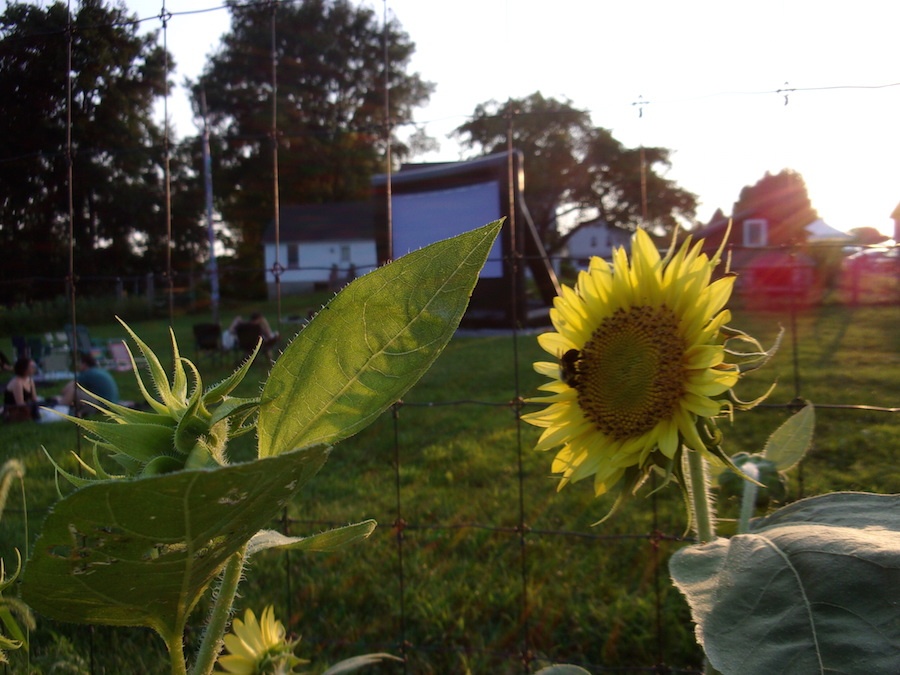

| Leah Andelsmith Photos. |
Just 25 minutes from downtown New Haven, on a country road in Woodbridge, sits Massaro Community Farm. Eggplant, garlic, kale and chard, peppers, cucumbers, and calico greens stretch out over several fields. So do its bees, butterflies, and chickens, just as busy as its humans.
On a recent August afternoon, while the golden sunlight was still slanting past the big red barn and the white farmhouse, Massaro Operations Assistant Rebecca Toms took a break for a tour of the farm. Passing by orange and yellow sunflowers and through a gate to the fields, she started with the farm’s history, one that goes back more than a century.
When John and Mary Massaro emigrated from Italy in 1916, they founded a dairy farm in Woodbridge, which they passed on to their two sons. In 2007, the couple’s sons passed away, and no relatives were willing and able to take over operation of the farm. The land was entrusted to the Town of Woodbridge. Toms said that many residents “wanted to build Little League fields, but the desire to have a community source for local food won out.”
In 2008, the nonprofit Massaro Community Farm was founded with a simple mission: Keep farming. Feed people. Build community.
Massaro now sells its produce at three area farmers’ markets, including Woodbridge Town Library, and CitySeed farmers’ markets at Wooster Square and Edgewood Park. But the farm’s first project was community supported agriculture—or CSA—and the program still thrives.
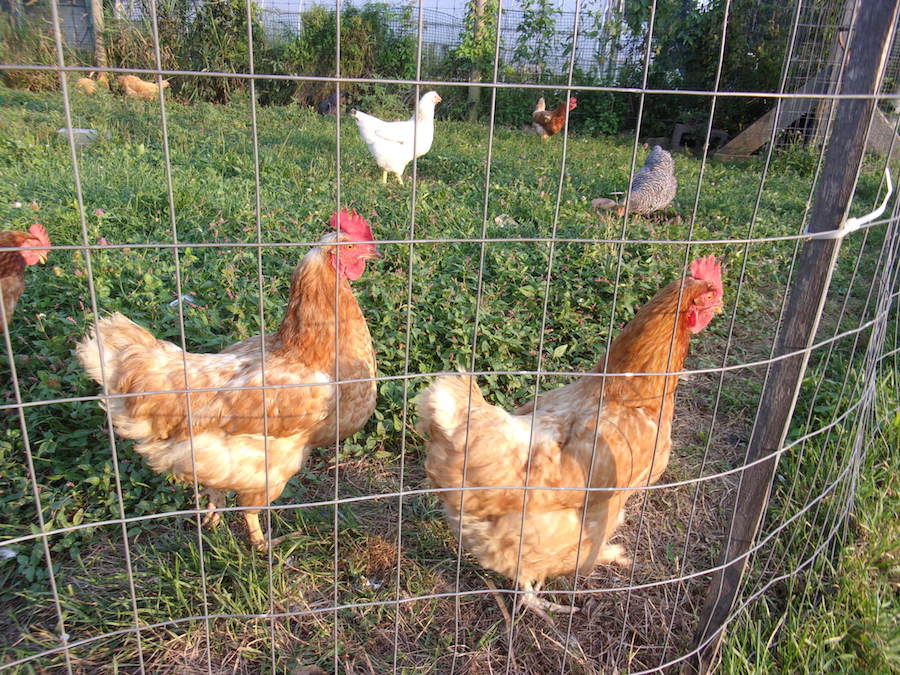
In a CSA program, subscribers can sign up to receive a weekly portion of produce from the farm. The farm gets capital up front, which it needs in order to have a successful growing season. Subscribers get 20 weeks of fresh, local produce, a direct connection to the people growing their food, and a stake in the long-term success of the farm.
At the heart of that continued success is the land itself. On our recent tour, Toms said that Massaro aims to do more than what is required for its organic certification, extending the scope of what it means to be an organic farm. For Massaro, that means first and foremost taking diligent care of the soil.
Because different plants take different nutrients out of the soil in order to grow, the farm rotates its crops through different fields so that the soil won’t become depleted. Staff members plant cover crops such as buckwheat, which actually feeds nutrients into the soil as it grows. They let fields lie fallow from time to time, not planting anything and letting the soil rest.
Coming up on a field of young summer squash plants, Toms explained that the field was planted in strawberries earlier in the season. It’s a practice called succession planting —the goal is to make the best possible use of the land. Whenever there is an abundance of produce, the farm donates it to community groups like Woodbridge Senior Center, New Haven’s Columbus House, and the Connecticut Food Bank. In 2017 alone, close to 10,000 pounds of produce was donated.
Massaro uses a collection of high tunnels to improve the harvest of heat-loving crops and extend the growing season. These long, tall structures look like greenhouses, but the crops inside are planted directly into the soil and the structure is heated only by the energy of the sun. The greens grown in winter are sold to local restaurants or donated.
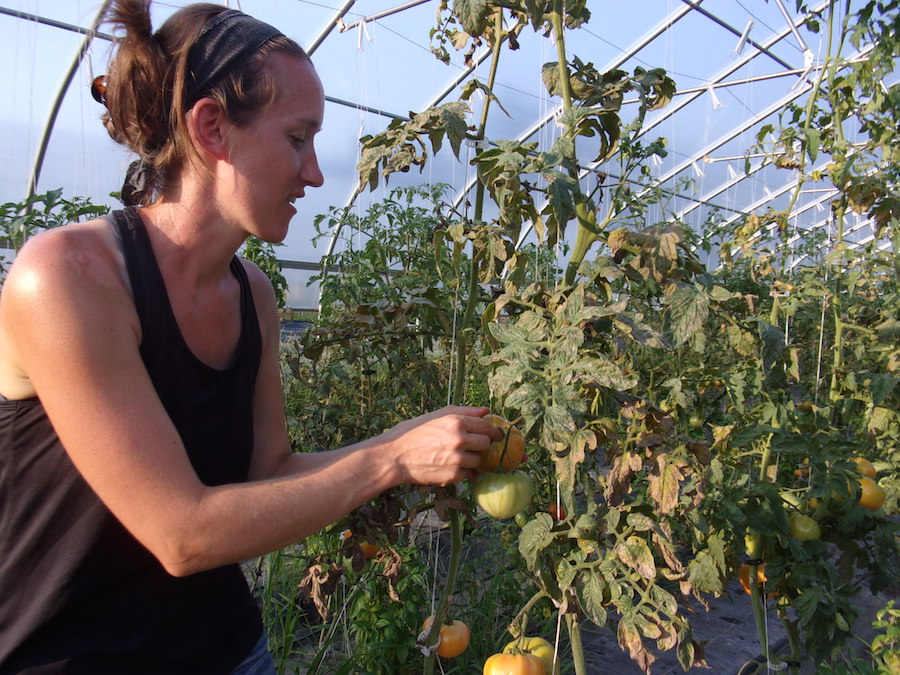
“They enable us to grow even in the middle of January,” Toms explained. “Production is slower, but at least there’s some production.”
“It’s a way of being able to contribute to the food system,” she added.
Walking alongside an extensive patch of poison ivy in a field adjacent to the road, Toms gave an example of the farm’s approach to problem-solving. Pesticides are out of the question and the farm faces a parking shortage, so the plan is to turn that field into a parking area that will improve the flow of foot traffic, making trips to the farm safer for children and more accessible for visitors.
“We’re constantly looking to grow and encourage the community to come,” she said. “Part of that is adding a parking area.”
Twelve of the farm’s 57 acres are either cultivated or open fields, but the remaining 45 acres consists of woods and wetlands with two nature trails for summer campers and farm visitors to explore. Leaving this native woodland is a part of the broadened scope of the farm’s organic practices, said Toms. It serves as an important reminder that “a forest is supposed to be the model that organic farming is supposed to copy. Everything grows and takes care of itself and is one hundred percent healthy.”
But for Massaro, thinking organically is about more than avoiding chemicals. It’s about seeing the entire system and working holistically.
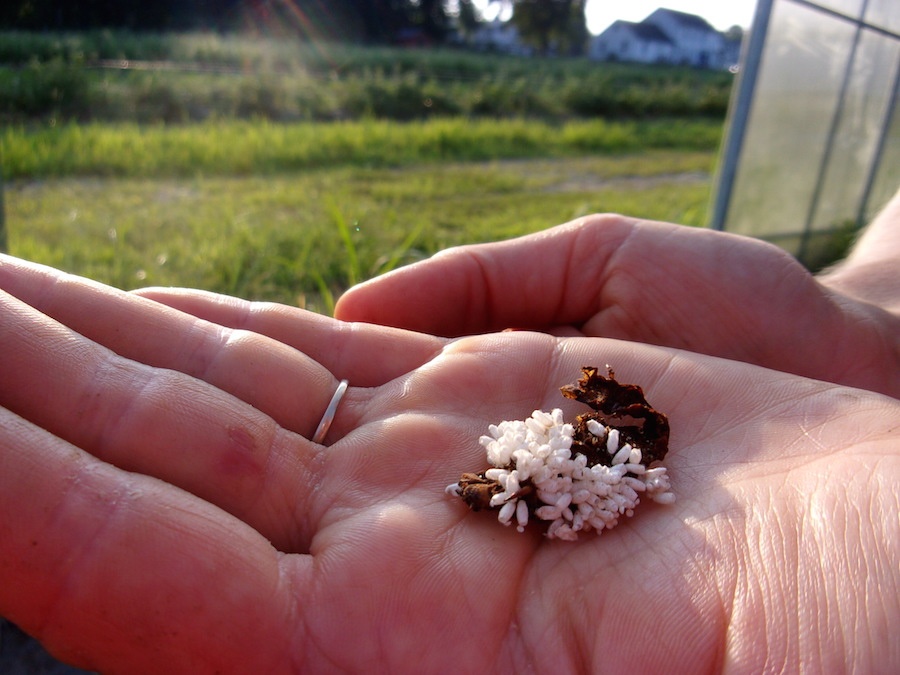
During the tour, Toms showed off an array of farm-focused problem solving skills. She gently picked up a cache of what looked like tiny, white barnacles—the delicate, empty egg cases of parasitic wasps—explaining that the farm uses them to combat hornworms that would otherwise devour their tomatoes.
Later she stopped suddenly near the apiary, grinned and asked, “Have you ever seen a half-pollinated vegetable?” She held up a stunted cucumber, explaining that the work of bees ensures that plants get all the genetic material they need to fully develop their produce.
“That’s why pollinators are so important,” she said. She added that Massaro offers regular bee-keeping workshops as a staple of their community programing. The farm’s goal is to educate both kids and adults—they want to serve the entire community.
It’s also why the butterfly garden, planted with echinacea and milkweed by children in Massaro’s education programs, remains “a really precious part of our farm.”
“The wonder and excitement of kids plucking a cherry tomato and their face lighting up at the sweetness of that explosion of juice … without a sense of wonder, the education doesn’t matter,” she said.
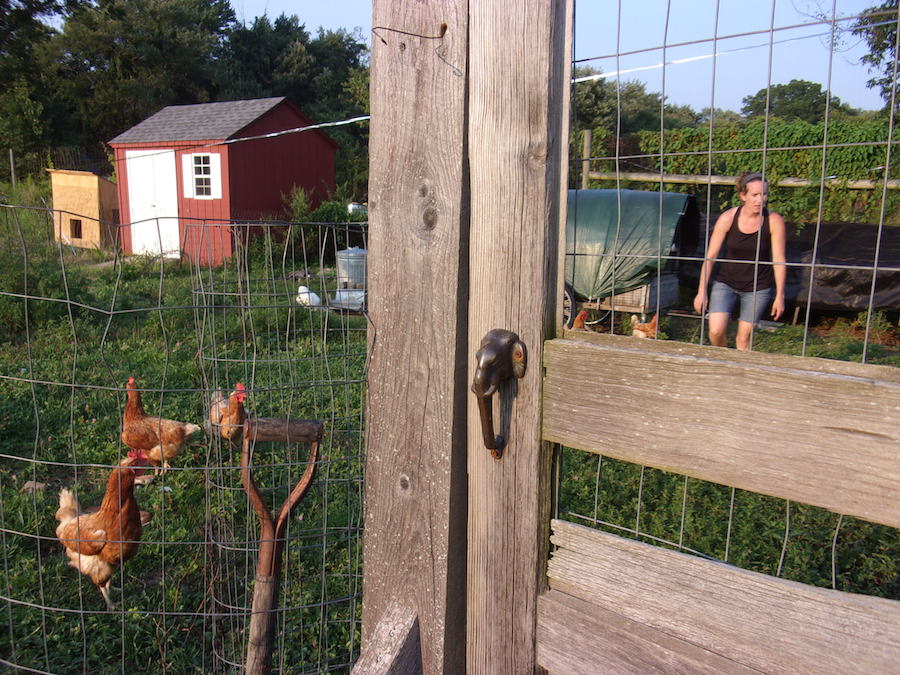
In just a couple of weeks, Massaro will host its annual Dinner on the Farm—a meal that’s completely locally-sourced and appeals to foodies and farm supporters alike.
It’s part of the farm’s still-evolving role in a community where so many people want to get involved and give back.
“We have a lot of wonderful volunteers that make this an incredible place and we are super grateful for them,” said Toms. Volunteers help with CSA distribution, educational programs, trail maintenance, and fundraising. And they even work out in the fields, helping to bring in the harvest.
“We have support from people willing to do this hard work,” she added. “We’re so fortunate to have so many people who want to see this farm grow and thrive.”

